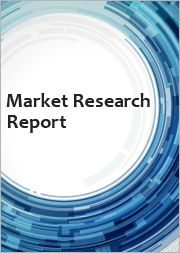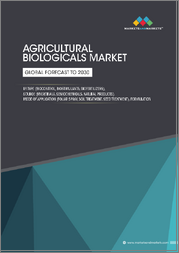
|
시장보고서
상품코드
1803459
미생물 솔루션 시장 : 제품 유형, 미생물 유형, 제제 형태, 유통 채널, 용도별 - 세계 예측(2025-2030년)Microbial Solutions Market by Product Type, Microbial Type, Formulation Form, Distribution Channel, Application - Global Forecast 2025-2030 |
||||||
미생물 솔루션 시장의 2024년 시장 규모는 1,257억 8,000만 달러로 평가되었으며, 2025년에는 1,343억 9,000만 달러로 성장하여 CAGR은 7.11%, 2030년에는 1,900억 3,000만 달러에 달할 것으로 예측됩니다.
| 주요 시장 통계 | |
|---|---|
| 기준 연도 2024년 | 1,257억 8,000만 달러 |
| 추정 연도 2025년 | 1,343억 9,000만 달러 |
| 예측 연도 2030년 | 1,900억 3,000만 달러 |
| CAGR(%) | 7.11% |
기술적 진보, 분야별 추진력, 미생물 솔루션의 성공적인 상용화를 위한 경영적 과제를 프레임으로 한 전략적 소개
미생물 솔루션의 환경은 여러 산업이 생산성, 지속가능성, 환경 보호에 대한 접근 방식을 재구성하고 있습니다. 이 주요 요약은 전략적 관점에서 시장을 소개하고, 핵심 기술 발전, 분야별 수요 촉진요인, 제품 개발자, 채널 파트너 및 최종사용자에 대한 실질적인 의미를 강조합니다. 이 소개서는 미생물 혁신을 규제 진화, 공급망 탄력성, 소비자 선호도 등 광범위한 맥락에서 파악함으로써 미생물 기반 제품이 틈새 시장에서 농업, 산업용 세척, 환경 복원 분야에서 주류 업무 도구로 전환되고 있는 이유를 설명합니다. 이유를 설명합니다.
균주 혁신, 첨단 제형화, 규제 추진, 디지털 활용의 혁신적 융합으로 미생물 솔루션의 경쟁 우위 재구축
과학의 성숙도, 규제 모멘텀, 최종사용자의 기대치 변화로 인해 업계는 변혁적인 변화를 겪고 있습니다. 균주 발견과 미생물 컨소시엄 설계의 발전으로 효능과 일관성이 향상되어 제품 개발자는 단일 균주를 표방하는 것이 아니라 명확한 다기능 솔루션으로 전환할 수 있게 되었습니다. 동시에 동결건조 및 마이크로캡슐화 플랫폼으로 인해 물류 제약이 완화되고 다양한 기후 및 취급 조건에서 사용자 채택이 개선되는 등 보존 기간 연장 및 적용 용이성을 실현하기 위한 제형 과학이 발전하고 있습니다.
2025년 미국 관세 상황이 공급망 재편, 공급처 다변화, 미생물 제제 우선순위를 촉진한 방법
2025년 미국 관세 조정의 누적된 영향은 미생물 솔루션 생태계 전반의 조달, 가격 책정 및 공급망 전략에 추가적인 복잡성을 가져왔습니다. 원료, 특수 부형제, 자체 균주를 국제 공급 라인에 의존하는 주요 기업들은 비용 상승과 리드 타임 연장에 직면했습니다. 이러한 압력으로 인해 많은 제조업체는 조달 발자국을 재검토하고 근해 능력을 향상시키고 수입 중간체에 대한 의존도를 줄이기 위해 제형 플랫폼에 대한 투자를 가속화해야 했습니다.
제품 분류, 미생물 기능군, 제제 과학, 유통 경로, 용도별 성능 고려사항을 연계한 통합 세분화 분석
제품 유형, 미생물 분류, 제형 전략, 유통 경로, 용도에 따라 세분화된 세분화 뷰를 통해 다양한 비즈니스 기회와 리스크 프로파일을 파악할 수 있습니다. 제품 유형별 차별화에는 환경 및 산업 세정 수요에 대응하는 바이오오가먼트 배양, 미량영양소 가용화제, 균근균 접종제, 질소 고정제, 인산 가용화제, 식물 성장 촉진 근권균, 농업 효율을 목표로 하는 칼륨 고정제 등을 포함한 바이오 비료, 작물 보호를 위한 바이오 살균제, 바이오 제초제, 바이오 살충제, 바이오 네마트로 구성된 바이오 농약, 생분해성 바이오 농약이 있습니다. 작물 보호를 위한 바이오 살균제, 바이오 제초제, 바이오 살충제, 바이오 네마틱제로 구성된 바이오 농약, 생분해성 표면 활성 특성을 제공하는 람노리피드, 소홀로리피드, 서펙틴과 같은 바이오 계면활성제, 식물, 동물, 인간의 건강을 지원하는 미생물 바이오 자극제 및 제공자 미생물 바이오 자극제 및 프로바이오틱스, 산업위생에 맞춘 미생물 세정제.
아메리카, 유럽, 중동 및 아프리카, 아시아태평양 시장에서의 규제 기대치, 개발 우선순위, 지역별 채널 전략의 차이점
아메리카, 유럽, 중동 및 아프리카, 아시아태평양의 역학 관계, 수요 패턴, 규제 동향, 상품화 접근 방식을 형성하고 있습니다. 아메리카의 수요 동향은 대규모 농업, 재생 가능 농법에 대한 관심 증가, 생물학적 방법에 기반한 투입물을 점점 더 선호하는 규제 환경의 발전에 영향을 받고 있습니다. 반대로 유럽, 중동 및 아프리카는 많은 유럽 시장에서 강력한 지속가능성이 요구되는 데다 규제 상황이 더 세분화되어 있어 높은 효능과 잘 문서화된 솔루션을 선호하고 있으며, 특수한 바이오 계면활성제 및 표적화된 복원 배양에 대한 기회를 창출하고 있습니다. 기회를 창출하고 있습니다. 중동 및 아프리카 시장에서는 가혹한 환경 조건에 대한 견고성과 비용 효율적인 물류가 우선시되는 경우가 많습니다.
균주 보유, 제형 플랫폼, 규제 관련 전문성, 하이브리드 채널 전략에 대한 통합 투자로 경쟁사와의 차별성 확보
주요 기업들은 균주 개발, 제형 혁신, 규제 과학, 채널 파트너십에 대한 보완적 투자를 통해 차별화를 꾀하고 있습니다. 일부 전략적 기업들은 자체 균주 은행과 고급 스크리닝 플랫폼을 통해 방어 가능한 파이프라인을 구축하는 반면, 다른 기업들은 동결건조나 마이크로캡슐화 등 제형 플랫폼에 집중하여 보존 기간을 연장하고 프리미엄 포지셔닝을 가능하게 하는 전략적인 기업들도 있습니다. 학술 기관과의 제휴 및 타겟팅된 M&A는 새로운 역량에 대한 접근을 가속화하고, 지리적 범위를 확장하며, 보완적인 제품 포트폴리오를 통합하기 위한 일반적인 메커니즘입니다.
R&D, 공급망 및 상업적 플레이북을 통해 탄력성을 강화하고, 채택을 가속화하며, 경쟁 우위를 확보하기 위한 실행 가능한 권장 사항
업계 리더들은 탄력성을 강화하고, 채택을 가속화하며, 기술적 차별화를 지키기 위한 행동을 우선시해야 합니다. 첫째, 무역 정책의 변화나 투입재 부족에 대한 리스크를 줄이는 동시에 지역별 수요에 대한 확장 가능한 대응을 가능하게 하는 모듈형 제조 및 이중 조달 전략에 투자하는 것입니다. 둘째, 물류 제약에 대응하고 대응 가능한 시장을 확대하는 캡슐화 및 동결건조 기술을 포함하여 안정성과 현장 성능을 향상시키는 제제 화학 및 전달 시스템에 연구개발 자원을 집중합니다. 셋째, 규제 및 컴플라이언스 역량을 강화하고, 승인을 신속히 처리하며, 관할권을 넘어 시장 주장을 뒷받침할 수 있는 신뢰할 수 있는 데이터 패키지를 만드는 것입니다.
1차 인터뷰, 기술 문헌 검토, 전문가 삼각측량 등을 결합한 엄격한 혼합 연구 접근법을 통해 실행 가능하고 검증 가능한 인사이트를 확보할 수 있습니다.
본 보고서는 1차 질적 입력, 2차 기술 문헌 검토, 전문가 상호 검증을 결합한 혼합 연구 접근법을 기반으로 합니다. 1차 조사에서는 농업, 산업용 세정, 환경 정화 분야의 R&D 리더, 제품 관리자, 채널 임원, 최종사용자와의 구조화된 인터뷰를 통해 기대 성능, 배합 제약, 구매 행동에 대한 생생한 관점을 파악했습니다. 2차 정보원으로는 학술지, 특허 리뷰, 규제 현황 분석, 기술 백서 등을 통해 과학적 궤적, 제제 혁신, 규제 동향을 파악했습니다.
결론 : 미생물 혁신을 지속가능한 성과로 연결하기 위한 통합 능력, 운영의 견고성, 실용적인 상업화 전략을 강조합니다.
결론적으로, 미생물 솔루션은 과학적 진보, 제형 혁신, 규제 명확화, 채널 진화가 교차하면서 여러 최종 용도에 걸쳐 실질적인 상업적 기회를 창출하는 단계에 접어들고 있습니다. 이러한 힘의 누적된 효과는 제품 개발자의 문턱을 높이는 것입니다. 성공하려면 균주 선택, 제형 엔지니어링, 규제 전략, 시장 개척 실행에 이르는 통합 능력이 필요합니다. 제조의 유연성과 공급처 다변화를 통해 경영 탄력성을 유지하면서 이러한 역량을 조정하는 조직은 과학적 잠재력을 지속적인 상업적 성과로 전환하는 데 가장 유리한 위치에 있습니다.
목차
제1장 서문
제2장 조사 방법
제3장 주요 요약
제4장 시장 개요
제5장 시장 역학
제6장 시장 인사이트
- Porter's Five Forces 분석
- PESTEL 분석
제7장 미국 관세의 누적 영향 2025
제8장 미생물 솔루션 시장 : 제품 유형별
- 생물증강 배양
- 생물정화 배양
- 폐수 배양
- 바이오 비료
- 미량영양소 가용화제
- 균근 접종제
- 질소 고정제
- 인산 가용화제
- 식물 성장 촉진 근권세균
- 칼륨 이동제
- 바이오 농약
- 바이오 살균제
- 바이오 제초제
- 바이오 살충제
- 바이오 살선충제
- 바이오 계면활성제
- 람노리피드
- 소포로리피드
- 서팩틴
- 미생물 바이오 자극제
- 미생물 클리너
- 프로바이오틱스
제9장 미생물 솔루션 시장 : 미생물 유형별
- 조류와 시아노박테리아
- 세균
- 바실러스속
- 비피도박테리움속
- 유산균속
- 리조비움/아조토박터/아조스피릴룸
- 균류
- 아버스큘라 균근균(AMF)
- 아스페르길루스속
- 페니실륨속
- 효모
제10장 미생물 솔루션 시장 : 제제 형태별
- 드라이
- 과립
- 분말
- 정제/사셰
- 캡슐화
- 비즈/알긴산 캡슐화
- 마이크로캡슐화
- 동결건조(리포실라이제이드)
- 액체
- 영양소와 사전 혼합
제11장 미생물 솔루션 시장 : 유통 채널별
- 오프라인
- 직접 판매
- 판매대리점
- 온라인
제12장 미생물 솔루션 시장 : 용도별
- 농업
- 작물 생산
- 잔디와 조경
- 동물 건강과 영양
- 양식업
- 어류
- 연체동물
- 새우
- 가축
- 가금
- 반추동물
- 돼지
- 양식업
- 바이오에너지
- 혐기성 소화 최적화
- 생물학적 탈황
- 환경 복원
- 지하수 정화
- 슬러지 및 악취 제어
- 토양 수복
- 식품 및 음료 가공
- 배수 처리
- 발효조제
- 위생과 바이오 필름 제어
- 산업용 청소 및 악취 제어
- 그리스 트랩과 배수구
- 매립지와 이송장
- 정화조
- 석유 및 가스
- 석유회수증진
- 탱크와 파이프라인 청소
- 폐수처리
제13장 아메리카의 미생물 솔루션 시장
- 미국
- 캐나다
- 멕시코
- 브라질
- 아르헨티나
제14장 유럽, 중동 및 아프리카의 미생물 솔루션 시장
- 영국
- 독일
- 프랑스
- 러시아
- 이탈리아
- 스페인
- 아랍에미리트
- 사우디아라비아
- 남아프리카공화국
- 덴마크
- 네덜란드
- 카타르
- 핀란드
- 스웨덴
- 나이지리아
- 이집트
- 튀르키예
- 이스라엘
- 노르웨이
- 폴란드
- 스위스
제15장 아시아태평양의 미생물 솔루션 시장
- 중국
- 인도
- 일본
- 호주
- 한국
- 인도네시아
- 태국
- 필리핀
- 말레이시아
- 싱가포르
- 베트남
- 대만
제16장 경쟁 구도
- 시장 점유율 분석, 2024년
- FPNV 포지셔닝 매트릭스, 2024년
- 경쟁 분석
- Novozymes A/S
- BASF SE
- Corteva, Inc.
- Bayer AG
- Syngenta AG
- Koninklijke DSM N.V.
- Lallemand Inc.
- FMC Corporation
- Evonik Industries AG
- Certis Biologicals B.V.
- Sumitomo Chemical Co., Ltd.
- Koppert B.V.
- Advanced Microbial Solutions, L.L.C. d/b/a Agricen
- Intralytix, Inc.
- bioMerieux SA
- Lonza Group Ltd.
- Thermo Fisher Scientific Inc.
- Merck KGaA
- Ginkgo Bioworks, Inc.
- Cargill, Incorporated
- Kerry Group plc
- Jeneil Biotech, Inc.
- The Archer-Daniels-Midland Company
- Merieux NutriSciences
- Ecolab Inc.
- Adisseo France SAS
- Charles River Laboratories
- Kemin Industries, Inc.
- Probiosphere Inc.
- UPL Limited
제17장 리서치 AI
제18장 리서치 통계
제19장 리서치 컨택트
제20장 리서치 기사
제21장 부록
KSM 25.09.16The Microbial Solutions Market was valued at USD 125.78 billion in 2024 and is projected to grow to USD 134.39 billion in 2025, with a CAGR of 7.11%, reaching USD 190.03 billion by 2030.
| KEY MARKET STATISTICS | |
|---|---|
| Base Year [2024] | USD 125.78 billion |
| Estimated Year [2025] | USD 134.39 billion |
| Forecast Year [2030] | USD 190.03 billion |
| CAGR (%) | 7.11% |
A strategic introduction framing technological advances, cross-sector drivers, and the executive questions that define successful commercialization of microbial solutions
The microbial solutions landscape is reshaping how multiple industries approach productivity, sustainability, and environmental stewardship. This executive summary introduces the market through a strategic lens, highlighting core technological advancements, cross-sector demand drivers, and the practical implications for product developers, channel partners, and end users. By situating microbial innovations within the broader context of regulatory evolution, supply chain resiliency, and consumer preferences, the introduction frames why microbial-based products are transitioning from niche applications to mainstream operational tools across agriculture, industrial cleaning, and environmental remediation.
This introduction also underscores the interplay between scientific progress and commercialization pathways. It outlines the converging trends in strain selection, formulation technologies, and targeted application development that collectively lower technical barriers to adoption. Finally, this section sets expectations for the remainder of the summary by identifying critical strategic questions for senior leaders: how to prioritize product portfolios across bioaugmentation cultures, biofertilizers, biopesticides, biosurfactants, and probiotics; how to optimize formulations across dry, liquid, and encapsulated formats; and how to align distribution strategies with evolving channel dynamics. These questions guide the deeper analyses that follow, ensuring the narrative remains relevant to executives seeking rapid, evidence-based decisions.
Transformative convergence of strain innovation, advanced formulation, regulatory impetus, and digital enablement reshaping competitive advantage in microbial solutions
The industry is undergoing transformative shifts driven by scientific maturation, regulatory momentum, and shifting end-user expectations. Advances in strain discovery and microbial consortia design have improved efficacy and consistency, enabling product developers to move beyond single-strain claims toward defined multi-functional solutions. At the same time, formulation science has evolved to extend shelf life and ease of application, with freeze-dried and microencapsulated platforms reducing logistical constraints and improving user adoption across diverse climates and handling conditions.
Regulatory frameworks and sustainability mandates are further accelerating change. Policymakers and large institutional customers increasingly favor biologically based interventions that reduce chemical inputs and lower environmental liability. This creates new incentive structures for the development of biofertilizers that target specific nutrient mobilization pathways, for biopesticides that reduce non-target impacts, and for biosurfactants that offer biodegradable alternatives to petrochemical surfactants. Concurrently, the digitalization of agriculture and industrial operations is enabling more precise matching of microbe-enabled products to use cases, supported by improved diagnostics and decision-support tools. Together, these shifts are redefining competitive advantage, elevating companies that integrate strain innovation, robust formulation, clear regulatory positioning, and channel reach into market leaders.
How the 2025 U.S. tariff landscape catalyzed supply chain restructuring, sourcing diversification, and formulation priorities across microbial solutions
The cumulative impact of tariff adjustments in the United States during 2025 introduced additional complexity to sourcing, pricing, and supply chain strategies across the microbial solutions ecosystem. Companies that rely on international supply lines for raw materials, specialized excipients, or proprietary strains faced elevated costs and extended lead times. These pressures compelled many manufacturers to reassess their procurement footprints, increase near-shore capabilities, and accelerate investments in formulation platforms that reduce dependence on imported intermediates.
In response, several actors prioritized vertical integration and dual-sourcing to mitigate tariff-induced volatility, while others redirected product distribution and logistics to optimize landed cost and service levels. For exporters and distributors, the tariff landscape necessitated revised commercial terms and localized inventory strategies to preserve customer price stability. Importantly, the tariff-driven adjustments also influenced product development prioritization; formulators shifted attention toward robust, shelf-stable formats such as encapsulated and freeze-dried products that can better tolerate longer transit times and variable storage conditions. These adaptations emphasize operational resilience and suggest that trade policy shifts will continue to shape supply chain design choices and go-to-market timing for microbial solutions providers.
Integrated segmentation analysis linking product taxonomy, microbial functional groups, formulation science, distribution pathways, and application-specific performance considerations
A nuanced segmentation view reveals different opportunity and risk profiles across product type, microbial taxonomy, formulation strategy, distribution channel, and application focus. Product-type differentiation spans bioaugmentation cultures, where bioremediation and wastewater-specific cultures address environmental and industrial cleaning needs; biofertilizers, which include micronutrient solubilizers, mycorrhizal inoculants, nitrogen-fixing agents, phosphate-solubilizing agents, plant growth-promoting rhizobacteria, and potash-mobilizing agents that target agronomic efficiency; biopesticides comprised of biofungicides, bioherbicides, bioinsecticides, and bionematicides for crop protection; biosurfactants such as rhamnolipids, sophorolipids, and surfactin that offer biodegradable surface-active properties; microbial biostimulants and probiotics that support plant, animal, and human health; and microbial cleaners tailored to industrial hygiene.
Microbial taxonomy drives functional differentiation, with algae and cyanobacteria, bacteria, fungi, and yeasts each offering distinct metabolic capabilities. Within bacteria, Bacillus, Bifidobacterium, Lactobacillus, and rhizobial complexes underpin many agricultural and health applications, while fungal groups including arbuscular mycorrhizal fungi, Aspergillus, and Penicillium species support nutrient uptake and bioprocess applications. Formulation choice further modulates performance and logistics, from dry formats-granules, powders, and tablets or sachets-to encapsulated platforms including bead and microencapsulation, as well as liquid and preblend systems that integrate nutrients for immediate use. Distribution dynamics separate offline channels, including direct sales and distributor networks, from online channels that are increasingly important for specialty and research-oriented buyers. Applications span agriculture, animal health and nutrition with aquaculture and livestock subsegments, bioenergy optimization, environmental remediation, food and beverage processing, industrial cleaning and odor control, oil and gas interventions, and wastewater treatment. Strategic segmentation analysis therefore requires integrated consideration of product efficacy, strain selection, formulation feasibility, channel economics, and the specific operational constraints of target applications.
Regional divergence in regulatory expectations, deployment priorities, and channel strategies across the Americas, Europe Middle East & Africa, and Asia-Pacific markets
Regional dynamics shape demand patterns, regulatory trajectories, and commercialization approaches across the Americas, Europe, Middle East & Africa, and Asia-Pacific. In the Americas, demand trends are influenced by large-scale agriculture, growing interest in regenerative practices, and an evolving regulatory environment that increasingly supports biologically based inputs; this drives investment in product portfolios that emphasize scalability and farmer-facing service models. Conversely, the Europe, Middle East & Africa region presents a more fragmented regulatory landscape coupled with strong sustainability mandates in many European markets, which favors high-efficacy, well-documented solutions and creates opportunities for specialized biosurfactants and targeted remediation cultures. The Middle East and Africa markets often prioritize robustness to harsh environmental conditions and cost-efficient logistics.
Asia-Pacific stands out for its diverse agroecological zones, rapid adoption of precision agriculture tools, and significant investment in aquaculture and wastewater treatment infrastructure, promoting demand for tailored microbial solutions across crops and animal health segments. Across regions, distribution strategies diverge: direct sales and distributor-led models remain dominant in traditional markets, while online channels are progressively influencing procurement among research institutions, specialty growers, and urban end-users. Taken together, regional insights underscore the importance of localized regulatory intelligence, formulation adaptation for climate and storage realities, and channel alignment to meet distinct customer expectations and procurement behaviors.
Competitive differentiation emerging from integrated investments in strain ownership, formulation platforms, regulatory expertise, and hybrid channel strategies
Leading companies are differentiating through complementary investments in strain development, formulation innovation, regulatory science, and channel partnerships. Some strategic players emphasize proprietary strain banks and advanced screening platforms to build defensible pipelines, while others focus on formulation platforms-such as freeze-drying and microencapsulation-to extend shelf life and enable premium positioning. Partnerships with academic institutions and targeted M&A activity are common mechanisms to accelerate access to novel capabilities, expand geographic reach, and integrate complementary product portfolios.
Commercial strategies increasingly blend technical support with service-oriented models, recognizing that end users often require application-specific guidance to realize product potential. Companies that excel at translating laboratory efficacy into field outcomes invest in demonstration projects, application protocols, and localized extension services. On the supply side, firms are optimizing manufacturing footprints to balance cost, regulatory compliance, and speed to market, including dual-sourcing strategies and selective near-shoring to reduce exposure to trade disruptions. Overall, competitive advantage is concentrating around firms that can deliver validated performance, scalable manufacturing, resilient supply chains, and distribution models that combine the reach of distributors with the flexibility of digital channels.
Actionable recommendations for strengthening resilience, accelerating adoption, and protecting competitive advantage through R&D, supply chain, and commercial playbooks
Industry leaders should prioritize actions that enhance resilience, accelerate adoption, and protect technical differentiation. First, invest in modular manufacturing and dual-sourcing strategies that reduce exposure to trade policy shifts and input shortages, while enabling scalable responses to localized demand. Second, concentrate R&D resources on formulation chemistries and delivery systems that improve stability and field performance, including encapsulation and lyophilization techniques that address logistics constraints and broaden addressable markets. Third, strengthen regulatory and compliance capabilities to expedite approvals and create credible data packages that support market claims across jurisdictions.
Beyond technical investments, companies should develop go-to-market models that pair distributor networks with direct digital channels, enabling targeted outreach to research institutions, specialty crop producers, and industrial end-users. Build value-added services-such as application advisory, diagnostic support, and demonstration trials-to lower adoption friction and convert early interest into recurring usage. Finally, pursue targeted collaborations and selective acquisitions to access high-impact strains, formulation IP, and regional market knowledge, ensuring that innovation pipelines remain robust and aligned to the most attractive application domains. These recommendations together support a balanced approach to growth that is defensible, customer-focused, and operationally resilient.
A rigorous mixed-methods research approach combining primary interviews, technical literature review, and expert triangulation to ensure actionable and validated insights
The report synthesis draws on a mixed-methods research approach combining primary qualitative inputs, secondary technical literature review, and cross-validation through expert consultations. Primary research included structured interviews with R&D leaders, product managers, channel executives, and end users across agriculture, industrial cleaning, and environmental remediation to capture first-hand perspectives on performance expectations, formulation constraints, and purchasing behavior. Secondary sources encompassed peer-reviewed scientific publications, patent landscape analysis, regulatory filings, and technical white papers to map scientific trajectories, formulation innovations, and regulatory developments.
Analytical steps included triangulation of interview insights with literature findings to identify recurring themes and divergence points, thematic coding of qualitative data to surface adoption barriers and enabling conditions, and scenario-based stress testing to evaluate the implications of supply chain and policy shifts. The methodology emphasized transparency in assumptions, clear documentation of data provenance, and iterative validation with subject-matter experts to ensure that conclusions reflect operational realities and scientific plausibility. Where appropriate, proprietary company disclosures and publicly available technical dossiers were integrated to enhance granularity around formulation strategies and application-specific performance characteristics.
Conclusion emphasizing integrated capabilities, operational resilience, and pragmatic commercialization strategies to translate microbial innovation into sustainable outcomes
In conclusion, microbial solutions are entering a phase where scientific progress, formulation innovation, regulatory clarity, and channel evolution intersect to create substantial commercial opportunities across multiple end uses. The cumulative effect of these forces is to raise the bar for product developers: success requires integrated capabilities spanning strain selection, formulation engineering, regulatory strategy, and go-to-market execution. Organizations that align these capabilities while maintaining operational resilience-through manufacturing flexibility and diversified sourcing-will be best positioned to convert scientific promise into durable commercial performance.
Decision-makers should view microbial technologies not as isolated product bets but as components of broader systems that deliver agronomic efficiency, environmental remediation, or industrial process optimization. Prioritizing investments that reduce adoption friction-demonstration projects, tailored formulations, and strong distribution partnerships-will accelerate uptake. Equally important is the need for continuous learning: monitoring regulatory changes, validating performance across real-world conditions, and iterating on product-market fit will determine which innovations scale successfully over time.
Table of Contents
1. Preface
- 1.1. Objectives of the Study
- 1.2. Market Segmentation & Coverage
- 1.3. Years Considered for the Study
- 1.4. Currency & Pricing
- 1.5. Language
- 1.6. Stakeholders
2. Research Methodology
- 2.1. Define: Research Objective
- 2.2. Determine: Research Design
- 2.3. Prepare: Research Instrument
- 2.4. Collect: Data Source
- 2.5. Analyze: Data Interpretation
- 2.6. Formulate: Data Verification
- 2.7. Publish: Research Report
- 2.8. Repeat: Report Update
3. Executive Summary
4. Market Overview
- 4.1. Introduction
- 4.2. Market Sizing & Forecasting
5. Market Dynamics
- 5.1. Advancements in genetically engineered probiotics for targeted gut health therapies
- 5.2. Rising adoption of microbial biofertilizers to enhance sustainable agricultural yields
- 5.3. Integration of microbial bioremediation techniques for industrial wastewater treatment
- 5.4. Development of rapid microbial detection systems leveraging CRISPR-based diagnostics
- 5.5. Growing investment in microbial fermentation processes for alternative protein production
- 5.6. Expansion of personalized microbiome therapies driven by advanced metagenomic profiling
- 5.7. Emergence of microbial consortia for bioenergy production from agricultural residues
- 5.8. Fungal and Bacterial Enzyme Synergy in Driving Decomposition of Recalcitrant Organic Carbon in Forest Soils
- 5.9. Microbial Modulation of Dissolved Organic Carbon Quality to Enhance Stream Metabolism and Nitrification Rate
- 5.10. Growth in microbial corrosion management programs in oil and gas pipelines leveraging qPCR monitoring, targeted biocides, and predictive maintenance
6. Market Insights
- 6.1. Porter's Five Forces Analysis
- 6.2. PESTLE Analysis
7. Cumulative Impact of United States Tariffs 2025
8. Microbial Solutions Market, by Product Type
- 8.1. Introduction
- 8.2. Bioaugmentation Cultures
- 8.2.1. Bioremediation Cultures
- 8.2.2. Wastewater Cultures
- 8.3. Biofertilizers
- 8.3.1. Micronutrient Solubilizers
- 8.3.2. Mycorrhizal Inoculants
- 8.3.3. Nitrogen-Fixing Agents
- 8.3.4. Phosphate-Solubilizing Agents
- 8.3.5. Plant Growth-Promoting Rhizobacteria
- 8.3.6. Potash-Mobilizing Agents
- 8.4. Biopesticides
- 8.4.1. Biofungicides
- 8.4.2. Bioherbicides
- 8.4.3. Bioinsecticides
- 8.4.4. Bionematicides
- 8.5. Biosurfactants
- 8.5.1. Rhamnolipids
- 8.5.2. Sophorolipids
- 8.5.3. Surfactin
- 8.6. Microbial Biostimulants
- 8.7. Microbial Cleaners
- 8.8. Probiotics
9. Microbial Solutions Market, by Microbial Type
- 9.1. Introduction
- 9.2. Algae & Cyanobacteria
- 9.3. Bacteria
- 9.3.1. Bacillus spp.
- 9.3.2. Bifidobacterium spp.
- 9.3.3. Lactobacillus spp.
- 9.3.4. Rhizobium/Azotobacter/Azospirillum
- 9.4. Fungi
- 9.4.1. Arbuscular Mycorrhizal Fungi (AMF)
- 9.4.2. Aspergillus spp.
- 9.4.3. Penicillium spp.
- 9.5. Yeasts
10. Microbial Solutions Market, by Formulation Form
- 10.1. Introduction
- 10.2. Dry
- 10.2.1. Granules
- 10.2.2. Powder
- 10.2.3. Tablets/Sachets
- 10.3. Encapsulated
- 10.3.1. Bead/Alginate Encapsulation
- 10.3.2. Microencapsulated
- 10.4. Freeze-Dried (Lyophilized)
- 10.5. Liquid
- 10.6. Preblend With Nutrients
11. Microbial Solutions Market, by Distribution Channel
- 11.1. Introduction
- 11.2. Offline
- 11.2.1. Direct Sales
- 11.2.2. Distributors/Dealers
- 11.3. Online
12. Microbial Solutions Market, by Application
- 12.1. Introduction
- 12.2. Agriculture
- 12.2.1. Crop Production
- 12.2.2. Turf and Landscaping
- 12.3. Animal Health & Nutrition
- 12.3.1. Aquaculture
- 12.3.1.1. Finfish
- 12.3.1.2. Mollusks
- 12.3.1.3. Shrimp
- 12.3.2. Livestock
- 12.3.2.1. Poultry
- 12.3.2.2. Ruminants
- 12.3.2.3. Swine
- 12.3.1. Aquaculture
- 12.4. Bioenergy
- 12.4.1. Anaerobic Digestion Optimization
- 12.4.2. Biological Desulfurization
- 12.5. Environmental Remediation
- 12.5.1. Groundwater Remediation
- 12.5.2. Sludge and Odor Control
- 12.5.3. Soil Remediation
- 12.6. Food and Beverage Processing
- 12.6.1. Effluent Treatment
- 12.6.2. Fermentation Aids
- 12.6.3. Hygiene and Biofilm Control
- 12.7. Industrial Cleaning and Odor Control
- 12.7.1. Grease Traps and Drains
- 12.7.2. Landfills and Transfer Stations
- 12.7.3. Septic Systems
- 12.8. Oil and Gas
- 12.8.1. Enhanced Oil Recovery
- 12.8.2. Tank and Pipeline Cleaning
- 12.9. Wastewater Treatment
13. Americas Microbial Solutions Market
- 13.1. Introduction
- 13.2. United States
- 13.3. Canada
- 13.4. Mexico
- 13.5. Brazil
- 13.6. Argentina
14. Europe, Middle East & Africa Microbial Solutions Market
- 14.1. Introduction
- 14.2. United Kingdom
- 14.3. Germany
- 14.4. France
- 14.5. Russia
- 14.6. Italy
- 14.7. Spain
- 14.8. United Arab Emirates
- 14.9. Saudi Arabia
- 14.10. South Africa
- 14.11. Denmark
- 14.12. Netherlands
- 14.13. Qatar
- 14.14. Finland
- 14.15. Sweden
- 14.16. Nigeria
- 14.17. Egypt
- 14.18. Turkey
- 14.19. Israel
- 14.20. Norway
- 14.21. Poland
- 14.22. Switzerland
15. Asia-Pacific Microbial Solutions Market
- 15.1. Introduction
- 15.2. China
- 15.3. India
- 15.4. Japan
- 15.5. Australia
- 15.6. South Korea
- 15.7. Indonesia
- 15.8. Thailand
- 15.9. Philippines
- 15.10. Malaysia
- 15.11. Singapore
- 15.12. Vietnam
- 15.13. Taiwan
16. Competitive Landscape
- 16.1. Market Share Analysis, 2024
- 16.2. FPNV Positioning Matrix, 2024
- 16.3. Competitive Analysis
- 16.3.1. Novozymes A/S
- 16.3.2. BASF SE
- 16.3.3. Corteva, Inc.
- 16.3.4. Bayer AG
- 16.3.5. Syngenta AG
- 16.3.6. Koninklijke DSM N.V.
- 16.3.7. Lallemand Inc.
- 16.3.8. FMC Corporation
- 16.3.9. Evonik Industries AG
- 16.3.10. Certis Biologicals B.V.
- 16.3.11. Sumitomo Chemical Co., Ltd.
- 16.3.12. Koppert B.V.
- 16.3.13. Advanced Microbial Solutions, L.L.C. d/b/a Agricen
- 16.3.14. Intralytix, Inc.
- 16.3.15. bioMerieux SA
- 16.3.16. Lonza Group Ltd.
- 16.3.17. Thermo Fisher Scientific Inc.
- 16.3.18. Merck KGaA
- 16.3.19. Ginkgo Bioworks, Inc.
- 16.3.20. Cargill, Incorporated
- 16.3.21. Kerry Group plc
- 16.3.22. Jeneil Biotech, Inc.
- 16.3.23. The Archer-Daniels-Midland Company
- 16.3.24. Merieux NutriSciences
- 16.3.25. Ecolab Inc.
- 16.3.26. Adisseo France SAS
- 16.3.27. Charles River Laboratories
- 16.3.28. Kemin Industries, Inc.
- 16.3.29. Probiosphere Inc.
- 16.3.30. UPL Limited






